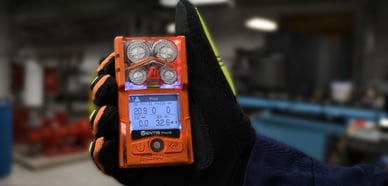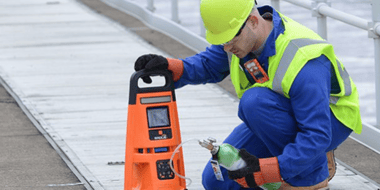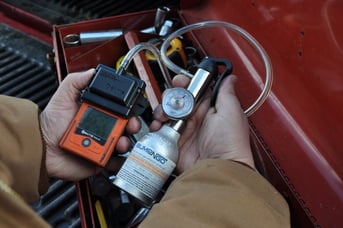Time is money. It’s an old saying that we have heard a thousand times, but why is it so memorable? Perhaps because it’s true. The problem with this is that to save time, people often lose sight of safety. But when you lose sight of safety, it can end up costing you both time and money – the very things you tried to avoid. When it comes to safety, we all know how to wear our PPE (personal protective equipment) properly. But why is it that when we use gas detection equipment, only some use it correctly?
FAST-PACED WORLD
Part of the problem lies in this fast-paced, technology-driven world, where everyone has become accustomed to getting what they want right away. We tend to forget that even though the gas detectors we carry are advanced pieces of technology, they still require time to measure gas concentrations in the air around us. As much as we wish it were true, a gas detector is not an instantaneous reading machine.
On some occasions, the gas detector will go into alarm or display a reading a few seconds after you have walked by the source. You may notice the reading and stop, but because you are no longer near the source of the hazard, the gas diffuses out of the sensor and the monitor no longer shows a reading. You could assume it was nothing and continue checking the area, not realizing that the gas hazard is still present.
GAS READINGS TAKE TIME

It takes time for sensors to fully respond to a gas hazard in the atmosphere. To understand why it’s necessary to wait, consider the electrochemical sensors in a toxic gas detector. These sensors consist of a working electrode, a counter electrode and sometimes a reference electrode. When gas diffuses through the sensor’s polytetrafluoroethylene (PTFE) membrane and hits the working electrode, a reaction occurs in which the flow of electrons from one electrode to the other creates an electric current proportional to the concentration of gas. The gas detector displays the output of this current according to its last calibration, which you see as a gas reading.
So how long does it take for these sensors to respond to gas? A value called the T90 is used. T90 is the amount of time the sensor takes to reach 90% of the target gas concentration. There are a number of variables in determining length of time, but it mainly depends on the gas and the manufacturer of the sensor. Gas detection sensors can have a T90 of 15, 17 or even 30 seconds. Because of this, some gas detector manufacturers use a general T90 of 30 seconds overall. This covers all the sensors that are in a standard four-gas monitor.
A CRITICAL TWO MINUTES
It’s important to remember that the T90 measurement gives us 90% of the reading, not 100%. This is fine for checking pipes and machines for leaks or toxic gases from exhaust. If you take the meter and hold it around the pipe or machine for the duration of the T90 (30 seconds) and you get no discernable readings, it is safe to say there are no leaks in that spot. If you do get a reading while checking for a leak, then you should wait to get the full 100% reading from the sensor. This typically takes two minutes.
After two minutes, the sensor electrolytes are fully saturated with the target gas and will give the best possible reading. Regardless of the response time, when any of the alarm set points are met, the instrument will alarm because of the changing condition.
Another common misconception is that using a monitor with a pump will make the sensors detect a gas hazard faster. Unfortunately, it does not work that way. The pump draws the gas sample into the unit, but it does not make the sensors respond any faster.
As much as we want to get the job done quickly, we need to do it safely. This applies to a wide array of safety areas beyond gas detection. If we can’t take the time for an accurate reading with the gas detector, we are not doing it safely. Giving your gas monitor time to process gas readings could save your life.
Need more guidance? Our training team offers on demand and custom training courses so you can be confident that you’re using gas detectors safely and effectively.



